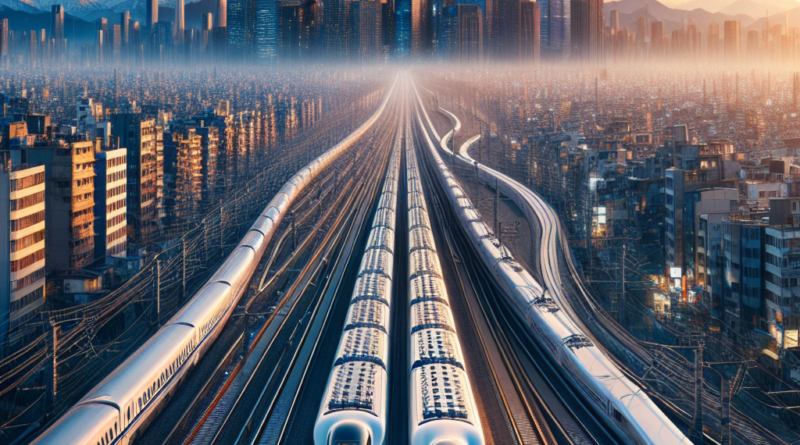This Country Boasts 160,000 km of High-Speed Rail, While Italy Has Only 1,467 km
“`html
Italy’s Ambitious Railway Modernization
In recent years, Italy has embarked on an ambitious journey to modernize its railway network, aiming to enhance infrastructures and improve connectivity among its major cities.
However, when comparing global advancements, it is too early to celebrate: clear disparities exist as some countries have achieved more remarkable milestones.
Among these, China stands out for building the world’s largest high-speed railway network, illustrating the significant gap between Italy and the Asian giant.
The Evolution of High-Speed Rail in Italy
Currently, Italy’s high-speed rail network spans 1,467 kilometers, linking strategic cities like Milan, Rome, and Naples.
High-speed trains such as Frecciarossa, Frecciargento, and Italo exemplify this system, dramatically reducing travel times between Italy’s key cities.
For instance, the Milan-Rome route can be completed in about 3 hours, while the Naples-Rome stretch takes less than two and a half hours.
This improvement has significantly enhanced connections between the northern and southern regions of the country.
New infrastructures, like the Reggio Emilia AV station designed by architect Santiago Calatrava, highlight Italy’s commitment to creating functional transport hubs.
This station, located on the Milan-Bologna route, exemplifies railway architecture, experiencing increasing passenger traffic and numerous daily stops.
Unfortunately, despite these achievements, the pace of expansion is relatively slow.
Projects, such as the Napoli-Bari line—which will cut travel times between these cities to just two hours—are still under development, reflecting the challenges Italy faces in maintaining a swift infrastructural development, particularly in the southern regions.
China’s Railway Dominance
While Italy strives to improve its network, China has already surpassed unimaginable milestones.
The country boasts a total railway network exceeding 160,000 kilometers, with 46,000 kilometers dedicated solely to high-speed rail.
This positions China as the world leader in high-speed line expansion, surpassing the combined lengths of all other nations.
The expansion of the Chinese network has effectively covered the national territory: 99% of cities with over 200,000 inhabitants are connected by the railway system, and 96% of cities with over 500,000 residents have high-speed connections.
This system enables hundreds of millions of Chinese citizens to travel swiftly across the country, immensely contributing to mobility and economic development.
The rapid growth of the Chinese railway network is not merely luck or magic; it results from massive government investments.
However, not everything is perfect: this aggressive expansion has led to significant debt, with China Railway, the state operator, accruing liabilities of about 859 billion dollars.
Nevertheless, the Chinese government shows no signs of slowing down, with plans to add an additional 8,000 kilometers of high-speed lines by 2027, bringing the total to 53,000 kilometers.
A Comparative Analysis
Comparing the high-speed railway systems of Italy and China highlights a profound difference in both extension and construction speed.
While Italy is striving to improve connections among its cities and develop a sort of “metropolitan Italy,” China has already established an extensive system that connects nearly all of its major cities over vast distances at exceptionally high speeds.
As Italy continues to work on adequately covering essential areas, China opens new high-speed railway sections exceeding 1,000 kilometers for each segment.
Recently, a new line linking Guangzhou and Meizhou, stretching 290 kilometers, was inaugurated to enhance connections in the southeast regions of China.
While high-speed rail has undoubtedly improved mobility between Italy’s main cities, the gap with China underscores the challenges of competing with a nation that prioritizes railway infrastructure.
Ultimately, Italy must persist in investing to expand its network, strengthen connections between the North and South, and ideally, enhance connectivity with the rest of Europe.
“`


